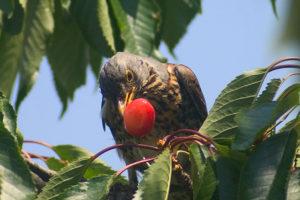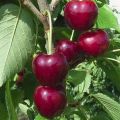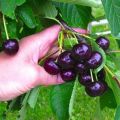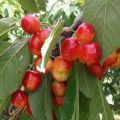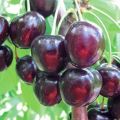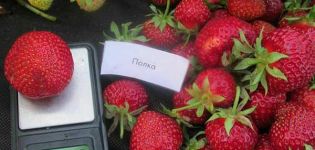Description and characteristics of the Melitopol cherry variety, the subtleties of growing
Sweet cherry varieties Melitopolskaya are very popular not only among amateurs, but also among professional farmers. The variety gives high yields of fruits with excellent presentation and excellent taste. The crop can be harvested by machine, which is a significant advantage for horticultural enterprises. The tree is suitable for growing in warm southern climates and does not tolerate severe winters.
How the variety is bred
This variety was obtained thanks to the work of Ukrainian breeders from the city of Melitopol. It is to this place that the cherry owes its name. A feature of these climatic conditions is a dry long summer and little snow winter. The resulting plant is most adapted to such conditions.
To date, 3 varieties of Melitopol cherry are known:
- black (registered in 1969), obtained by pollination of the French Black variety;
- early (registered in 1976), bred by crossing the varieties Franz Joseph and Early Mark;
- red (registered in 1996).
These varieties differ not only in the external characteristics of the fruits, but also in the timing of their ripening. For the first time, a famous breeder from the Institute named after V.I. M. F. Sidorenko UAAS M. T. Oratovsky.
Photo and description
A detailed description of the variety and photos allow you to distinguish the Melitopol cherry from other species by its characteristic features. It is her inhabitants of the southern regions who most often settle on their personal plots to obtain a harvest of useful berries.
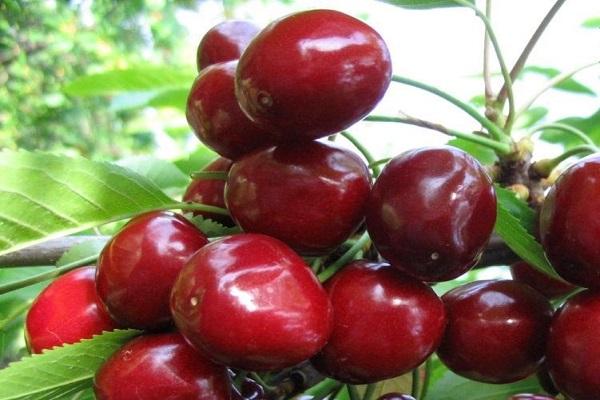
general description
Large-fruited cherries are the dream of any gardener. If at the same time it does not require much attention to itself and shows sufficient resistance to diseases, then there will be no big trouble with growing. Black Melitopol is exactly the variety that thanks to a generous harvest for minimal care.
Advantages
Melitopol cherry has significant advantages, thanks to which it remains a favorite among gardeners for a long time. These include:
- increased drought resistance;
- frost resistance;
- high yield rates;
- excellent taste of fruits;
- good product characteristics;
- high resistance to disease;
- weak susceptibility to the negative effects of pests.
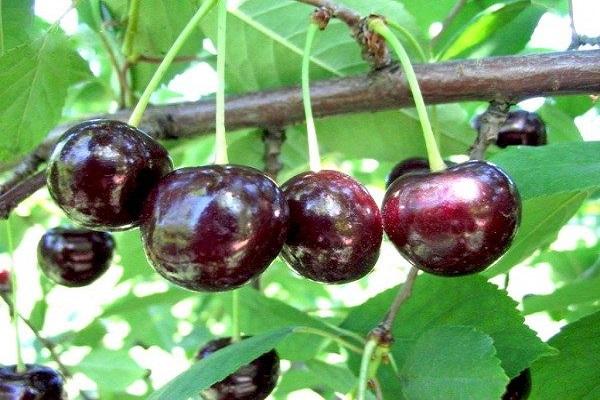
disadvantages
With great advantages, Melitopol cherry is not without some disadvantages:
- self-fruitless tree;
- unsuitable for growing in harsh climates;
- with a strong drop in temperature in winter, flower buds die;
- with return frosts in spring, most of the pistils are destroyed.
Bud
Melitopol cherry forms small cone-shaped buds that do not tolerate recurrent spring frosts.
Leaf and flower
The leaf plate of Melitopol is large, with pointed ends and characteristic notches along the edges, of a rich green color.
The cherry blossom period is at the end of May. The petals are snow-white, wide open. The flowers themselves have a strong, pleasant scent.

Fetus
Melitopolskaya fruits are valued not only for their excellent taste, but also for their excellent commercial qualities, large size, and universal application.
Weight
Ripe cherries weigh about 8 g, but there are also larger specimens.
Height
The height of the berry at Melitopolskaya reaches 2.7 cm.
Width
The width of the fruit ranges from 2.5 to 3 cm.
Thickness
The wall thickness of sweet cherry fruits is large, the stone takes up less than 5% of the total volume.

Color
When ripe, the Melitopol pulp acquires a beautiful dark red color, and its skin becomes red-black with a glossy sheen.
Peduncle
The peduncle of this medium-sized sweet cherry is divided into 2-3 glands.
Bone
Melitopolskaya's bone is small, occupies about 4.5% of the total fruit volume, and has a beige color.
general characteristics
Melitopolskaya belongs to the varieties with medium ripening periods. Harvesting begins in mid-June. Also, to obtain a bountiful harvest, it is necessary to plant pollinating varieties nearby. The first fruits are savored 5 years after planting a seedling in the garden.
Taste qualities
Melitopolskaya has excellent taste. The fruit has the perfect balance of sweetness and acidity. Tasters assess their merits at 4.9 points.
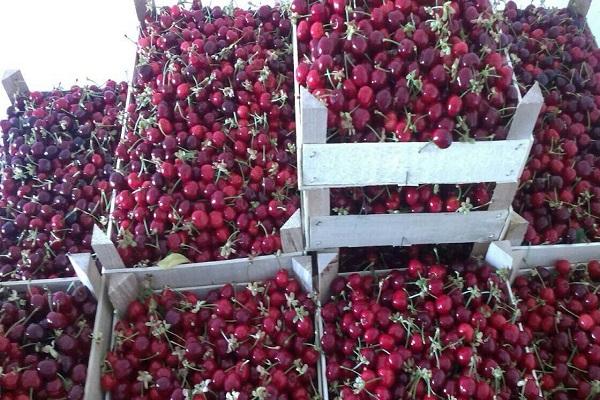
Content of nutrients
Sweet cherry varieties Melitopol is a real storehouse of vitamins and nutrients. It includes:
- zinc;
- copper;
- manganese;
- cobalt;
- iron;
- phosphorus;
- magnesium.
Of the vitamins in cherries, B1, B2, B6, B9, A, E, P and, of course, vitamin C prevail.
Tree height and growth rate
The tree near Melitopolskaya grows very quickly and rapidly, but its height does not exceed 3 m, which allows harvesting without special devices.
Flowering and ripening period
Melitopol cherry blossoms begin in mid-May, and the harvest ripens in the second half of June. The fruits ripen together, almost simultaneously.

Yield
An adult cherry tree of the Melitopolskaya variety, subject to the conditions of agricultural technology and correct molding, is capable of giving up to 80 kg of a harvest of ripe fruits of high quality.
Transportability
Dense flesh and skin make cherries suitable for long-distance transportation without loss of marketability.
Drought tolerance
Melitopolskaya belongs to drought-resistant varieties and easily tolerates a prolonged lack of moisture.
Frost resistance
Sweet cherry of this variety has good frost resistance. In winter, it can withstand temperatures as low as -25 ° C.
Disease resistance
Melitopolskaya is highly resistant to moniliosis and gray rot. It is affected by fungal infections only in conditions of high humidity and in the absence of preventive treatments. But the plant needs mandatory prophylaxis against coccomycosis.
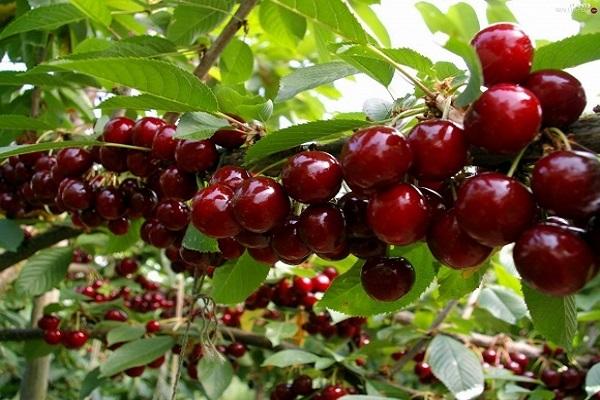
Of the pests, cherries are most often attacked:
- cherry fly;
- caterpillar;
- aphid;
- renal weevil;
- sawfly.
Fruit application
Melitopolskaya fruits are suitable not only for fresh consumption, but also for all types of processing:
- making homemade wine;
- preparation of jam and compotes;
- juicing;
- freezing;
- drying.
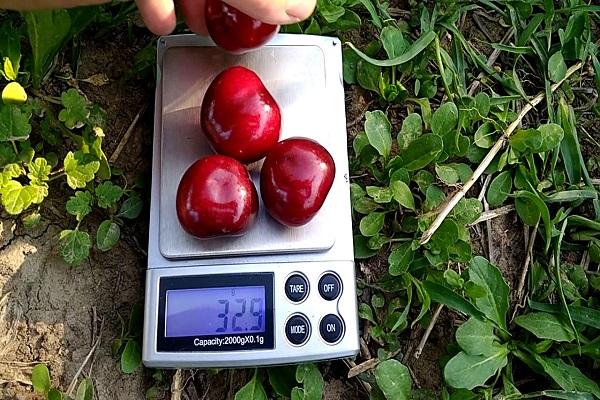
Basic soil requirements
Melitopol sweet cherries should be grown on fertile loamy, sandy loam soil with good air permeability. If the land does not meet these requirements or is very heavy, then measures are taken in advance to improve its characteristics.
Landing features
The quality and quantity of the future crop of cherries largely depends on the correct choice of planting material and compliance with the planting rules, therefore, this procedure must be taken responsibly.
Sapling selection
The choice of a seedling is the key to success in obtaining tasty and healthy berries. There are a number of requirements for young plants in order for them to develop normally and be healthy.
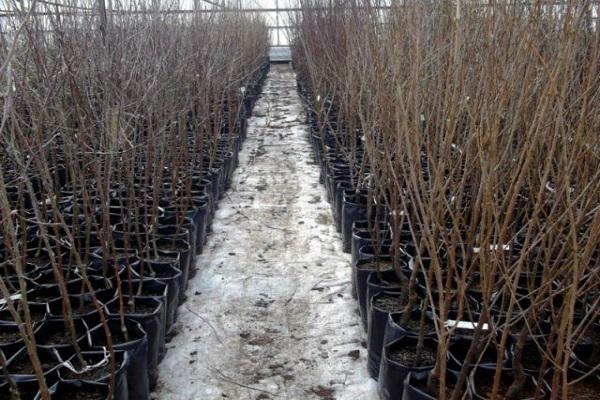
Root system
A seedling with a closed root system can be planted on the site during the entire growing season by transferring from a pot to the ground. But cherries with an open root system should be planted only before bud break. The roots must be well developed and free from signs of disease, rot, mold or mechanical damage.
Trunk
A cherry seedling suitable for planting should have a trunk thickness of 15-17 mm. On its bark, the presence of spots, deep scratches, and other visible deformations is not allowed.
Age
Melitopol cherries take root best if the tree is 1-2 years old at the time of planting.

Vaccination
The varietal characteristics of the plant largely depend on the grafting, as well as on which stock was used to grow the planting material. In young cherries, the grafting site is still clearly visible, therefore it is imperative to pay attention to this and check with the seller which rootstock was used in this case.
Planting timing
Melitopol sweet cherries with an open root system are planted during a period when it is still at rest and the buds have not begun to bloom. In spring, this time is the end of March - the first half of April, and in the fall, work is carried out immediately after the completion of the leaf fall. Before the cold weather begins, the seedling should have time to root well.
Site selection
Melitopol cherries are planted in a well-lit area. It is advisable to set aside for this a place in the southern side of the garden, which will be reliably protected from drafts and strong winds. There should be no stagnation of excess rain or melt water.
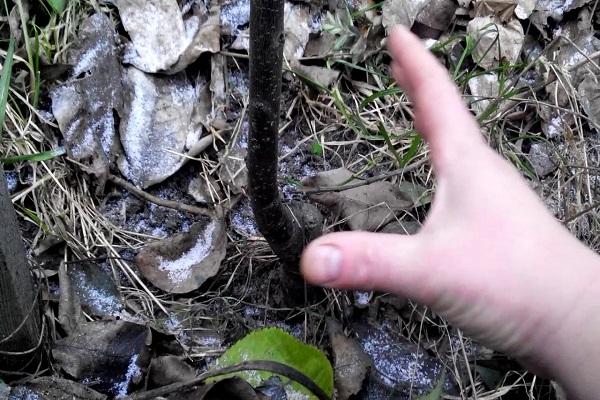
Pit preparation
A pit for planting a seedling should be prepared in advance. If the planting is planned for the spring, then preparation is carried out in the fall. A mixture of humus or compost with the top fertile soil layer is added to the bottom in a 1: 1 ratio. There, if necessary, add other hardly soluble fertilizers (for example, superphosphate). If the site is dominated by acidic soil, then it will be advisable to add dolomite flour in a small amount.
The depth of the planting pit is about 0.6 m, and its width is 0.8 m.The distance to neighboring trees or shrubs is left at least 4-4.5 m.
Landing
Before planting, the cherry seedling is dipped in the root system into water with a root formation stimulator diluted in it for a couple of hours. After that, the main stem is cut at a height of 0.6 m. In the planting pit, the ground at the bottom is formed in the form of a small mound, on which the tree is carefully placed and its roots are straightened. A peg for a garter is driven in nearby and the hole is covered with nutritious soil. The root collar should be above the ground level, and the grafting site should be slightly higher.
The soil around the Melitopol sweet cherry is tamped, watered abundantly and mulched with hay or mown grass.
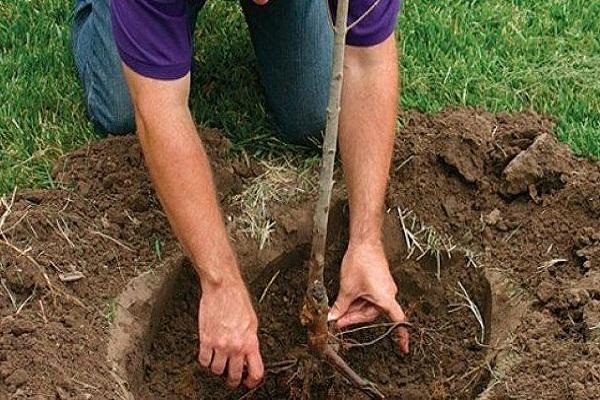
Pollinators
Melitopolskaya belongs to self-fertile varieties and requires the obligatory planting of trees of another variety nearby with similar flowering periods. Only in this case it will be possible to get a generous harvest from her.
Ruby early
Fast-growing tree with a spherical crown. A variety with early ripening dates. Sweet cherries are formed of small size, dark red color. The pulp is juicy, tasty, fleshy. The early ruby has increased resistance to common diseases, gives bountiful harvests, is drought-resistant, tolerates low temperatures in winter. The taste qualities of sweet cherries were assessed by the tasters as dessert. The crop is suitable for transportation.
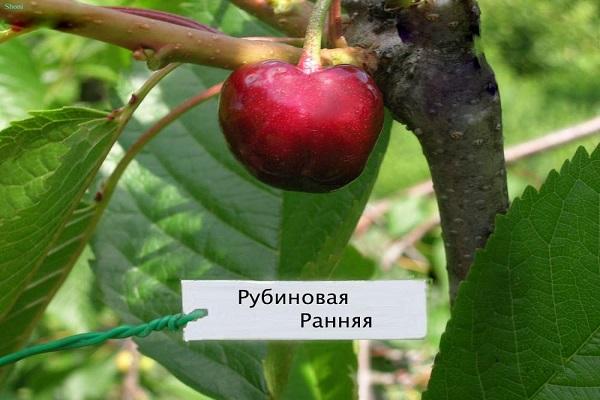
Skorospelka
Sweet cherry with a very early ripening period and high yields. The fruits are suitable for long-distance transportation, which makes Skorospelka profitable for commercial cultivation. The crown is not prone to thickening, which makes pollination effective, and ripening cherries get enough sunlight. The variety is drought-resistant, withstands winter drops in temperature, and has good immunity to diseases. A small drawback is the exactingness of the soil.
Valery Chkalov
One of the time-tested varieties that does not lose its popularity among connoisseurs of delicious fruits. Sweet cherry is cold-resistant, drought-resistant, with good immunity to diseases. Chkalov belongs to the early varieties and pleases with a bountiful harvest in mid-June. The maximum height of the tree reaches 6 m. When ripe, cherries become dark red, heart-shaped, weighing up to 8 g each. Their taste is sweet, with a slight sourness.
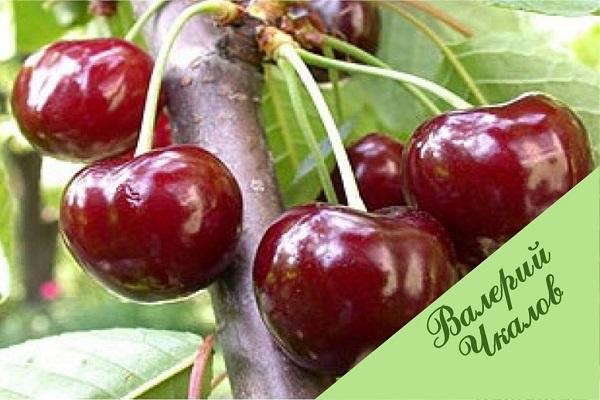
Care secrets
To get a good harvest, it is important not only to plant a tree, but also to be able to properly care for it.
Watering
A young cherry seedling requires the soil around it to be constantly moist. This can be achieved by regular watering. An adult tree especially needs watering during such periods:
- budding;
- the formation of ovaries;
- before the onset of frost;
- during a drought.
Water is poured into the irrigation furrow, which should be done in advance. Its size corresponds to the radius of the crown.
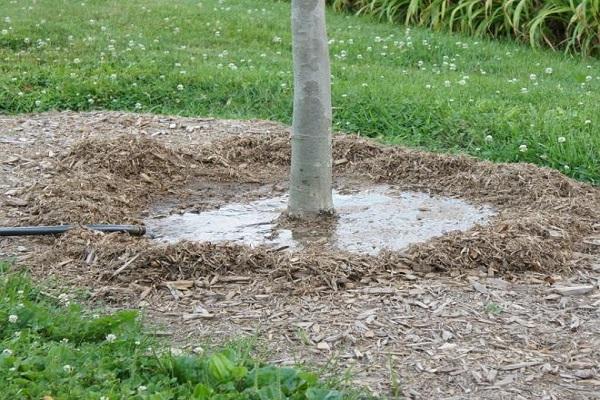
Top dressing
Immediately after planting, Melitopol cherry does not need additional feeding. The first time fertilization is applied after the tree begins to bear fruit. In the spring, urea will need to be embedded in the soil, and in the fall, urea and potassium are used. Before the onset of cold weather, a layer of organic matter is poured into the trunk circle: compost or humus. In areas with acidic soil, a small amount of lime or dolomite flour is embedded every 5 years.
Pruning with the Spanish bush method
Since Soviet times, the following tree growing method has been used: the cherry crown is formed according to the principle of a thin layer: a tree with one main trunk up to 7 m high.However, over the years, fruiting deteriorated, the berries were tied almost at the very top and it was problematic to collect them. Modern technologies allow restraining the growth of green mass and directing the forces of Melitopol cherries to the formation of ovaries.
When forming the crown in a popular way, like a Spanish bush, the height of the plant does not exceed 3 m, and the harvest is carried out without special devices.
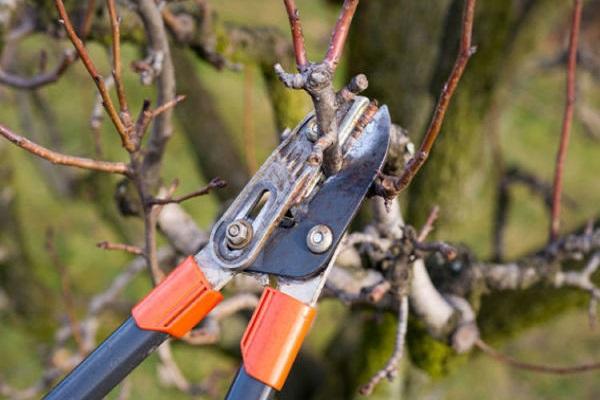
In the first year, the seedling is cut at a maximum height of 0.7 m. During the summer, lateral branches will grow on it. Of these, 4 of the strongest are left, growing in different directions upwards, and the rest are pinched. As soon as the length of the main branches left reaches 0.5 m, they are cut off at the same level. The tops growing after such pruning should be cut regularly.
In the second year, all the main shoots of the second order are shortened to 0.3 m so that they are at the same level. In the middle of summer, the growths of the 3rd order should already reach a height of 0.5 m. They are pulled to a horizontal position with the help of weights, and the remaining young shoots are cut to a length of 0.3 m. In the third and subsequent years, the sweet cherry will already be formed. It will only be necessary to periodically shorten the branches that will go beyond the crown, and make a little thinning.
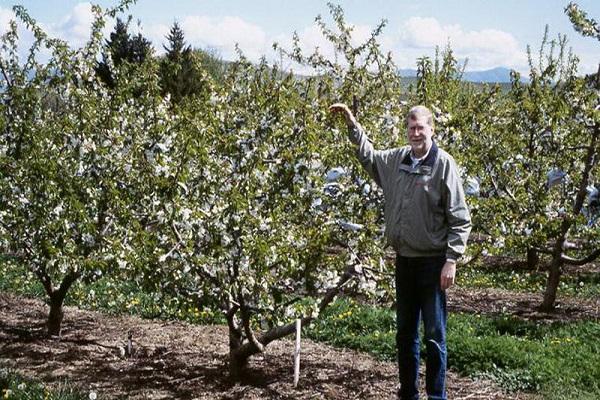
Bird Prevention
So that Melitopol cherry does not become a delicacy for birds, by the time the fruit ripens, a small fishing net or other similar material is thrown over it. If the tree is small, then a frame is previously constructed for these purposes.
Harvesting and storage
Melitopol cherry is harvested in mid-June. Work is carried out both manually and with the use of mechanization tools. In the refrigerator, the fruits are stored for up to 14 days. The harvested crop is consumed fresh or used for any type of processing, harvesting. It is noteworthy that after freezing, cherries do not flow and retain their shape well.
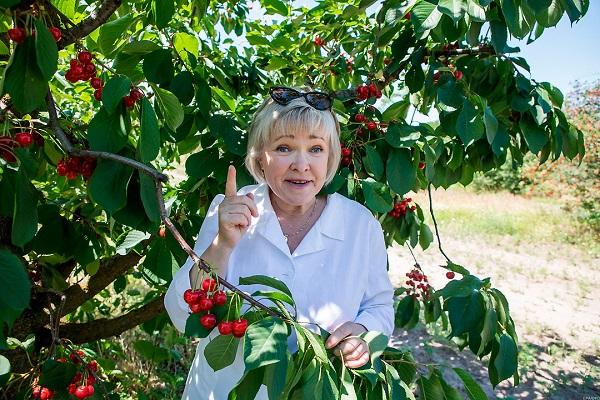
Reviews
During the existence of the variety, many gardeners personally tested the Melitopol cherry, growing it in their own garden. Of course, they are ready to share their feedback.
Marina Eduardovna: “Having studied the reviews on the Internet, I decided to buy two varieties of sweet cherries for the garden: Melitopol and Valery Chkalov. The harvest had to wait a long time. When they managed to collect the first fruits, the whole family was very happy: the cherries grew unusually large, sweet and beautiful in appearance. There was no big trouble with leaving. We limited ourselves to crown molding, fertilization and systematic watering. They did not cultivate diseases, so as not to once again pollute the land with chemistry. But I planted flowers with a pungent aroma around the perimeter to scare off pests. "
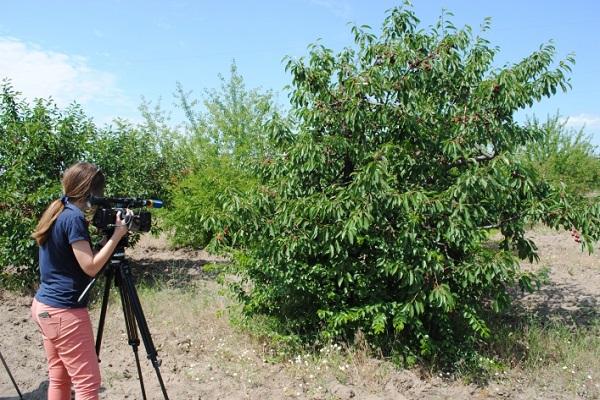
Nikolay Grigorievich: “I have been growing Melitopol for a long time. There was no need to plant a pollinator, because there are two varieties of sweet cherry growing in the neighboring area. I want to note that in our gardening society there are problems with water supply, therefore it is not possible to water the garden regularly. But even in such difficult conditions, the tree gives a stable harvest of fruits every year. We eat part of the harvest fresh, and from the remainder we make small preparations for the winter. "
Nina Sergeevna: “I planted Melitopol'skaya on the advice of friends. After 4 years, the tree gave its first harvest. On the site, my soil is depleted, so I constantly have to apply fertilizers and feed the cherries. If this is not done in time, then the fruits become smaller, and the plant discards part of the ovaries. For several years I have already got used to this regime and I try to do top dressing on time. The variety suits me: the harvest is enough not only to provide a family of 3 with fresh cherries, but also to make harvesting. "
